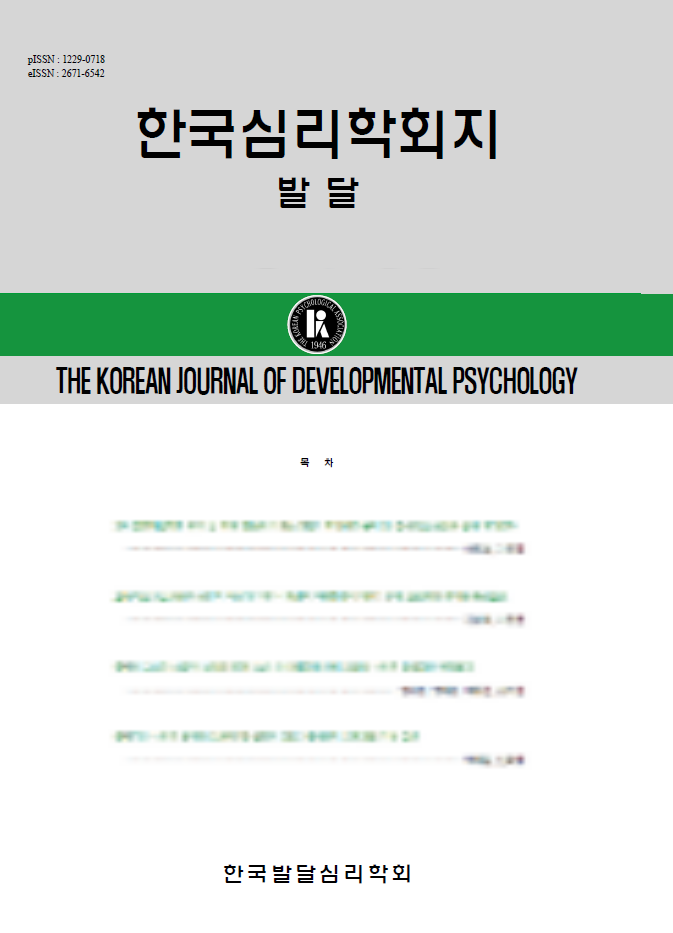open access
메뉴
open access
메뉴 ISSN : 1229-0718
ISSN : 1229-0718
본 연구는 학령전 아동을 대상으로 중다원인상황에서 일어나는 결정불가능(indeteminacy)에 대한 이해를 정적 포착(positive capture: Fay & Klahr, 1996) 현상을 중심으로 알아보았다. 이 연구에서는 여러 개의 스탬프 중에서 특정 그림을 찍은 스탬프가 어떤 것인지를 찾아 내는 스탬프 과제를 사용하였다. 스탬프의 구성은 목표자극을 찍을 수 있는 스탬프가 오직 하나인 조건, 두 개인 조건, 그리고 스탬프의 구성에 관해서 전혀 알려주지 않은 조건을 사용하였으며, 스탬프의 그림을 하나씩 찍어가며 순차적으로 보여주면서 어떤 스탬프로 그림을 찍었는지를 질문을 하였다. 아동들은 스탬프의 구성에 관하여 아무런 정보를 제공받지 않은 경우 목표자극과 동일한 스탬프가 찍히면, 아직 확인되지 않는 스탬프가 있음에도 불구하고, 그 스탬프를 지적하는 정적 포착의 오류를 범하였으며, 남은 스탬프에는 목표자극을 찍을 수 있는 스탬프가 없다는 잘못된 믿음을 가지고 있었다. 목표자극 스탬프가 둘이 있음을 분명하게 본 조건에서도 아동은 마찬가지로 정적 포착의 오류를 범하였다. 그럼에도 불구하고 많은 아동이 남은 스탬프 중에 목표자극을 찍을 수 있는 스탬프가 있다는 것을 정확하게 알고 있었다. 이 결과를 근거로 아동이 사용하는 결정규칙인 정적 포착의 근원을 논의하였다.
Young children's understanding of indeterminacy was investigated in an extension and partial replication of Fay & ICIahr (1996). They asked preschoolers to respond know or guess to various evidence patterns that included matches between the target and a potential source of that target (+), mis-matches (-), or unknown matches(?). Fay & Klahr found that children were able to correctly respond know to indeterminate problems such as (- + - +) in which it was clear that more than one item matched the target. However, most pre-schoolers incorrectly responded know to problems in which there was a single match plus some remaining unexplored evidence(e.g., - + ? ?). Fay & Klahr called this phenomenon positive capture. One possible source of positive capture is children's mistaken assumption that all items in each problem set were unique. In the present study, we explored this possibility by providing kindergartners with different models of the uniqueness or sameness of items in each problem set, focusing on problems like (- + ? ?), to which positive capture responses are common. Four models were compared. (1) No Explicit Model: Problems were presented as in Fay & Kiahr with no additional information about the relationship among possible items. (2) Explicit Exclusive Model- Children were told that each item was unique. Only one item could match the target. (3) Explicit Target Redundant- Children were told that two of the items in the set were the same. The target item matched the two identical items. This model was expected to counteract the uniqueness assumption by making explicit the indeterminacy of the evidence, leading more children to give the correct answer guess, And, (4) Explicit non-Target Redundant: Same with ETR, but the non-target item matched the two identical items. After each positive capture problem children were also asked whether any of the unrevealed items could match the target (probe question). Performance in the No Explicit Model condition replicates Fay & Klahr; the majority of children committed the positive capture error on (- + ? ?) problems. In response to the probe question, 67,7% of kindergarten children indicated that there were no more matches among the unseen items (uniqueness assumption). Even when it was clearly stated that there were two matches (Explicit Target Redundant), younger children made positive capture errors. In this condition, 90.6% of kindergarten, children showed positive capture, and 31.3% of them claimed there was only one match, in contrast to the given model. Thus, even when children recognized that there were two matches, many were still unable to overcome the positive capture error.
